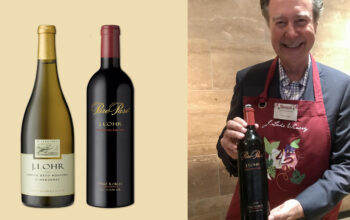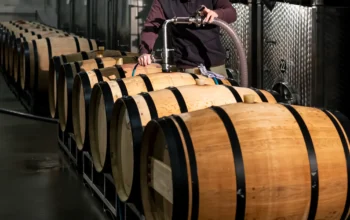Since we drank less in Dry January, we are now packing it in nicely. Not by taking in more, but by consciously choosing better and slightly more expensive. Rice & Elise Moeskops, sommelier and co-owner of two restaurants, put together this delectable Cabernet Sauvignon selection. The condition for entry was a minimum price of €15 per bottle.
"A Pinch of eucalyptus makes Cabernet Sauvignon sexy"
Cabernet sauvignon rules the world. With over 310 thousand hectares, almost 7 per cent of total plantings, it is the most widely grown wine grape in the world. It was once loved by the best wines from the Médoc, but proved to be perfectly at home elsewhere as well, developing its own style. This individual style is best expressed in the more expensive wines where quality goes double over quantity. This is when a Cabernet Sauvignon from California clearly distinguishes itself from one from Italy, Spain or South Africa, for example. We went looking for those terroir wines.
TABLEAR
During this tasting, the grape clearly demonstrated its ability to show its specific provenance. Cabernets from warm Australia are significantly sultrier than those from cooler France, and you detect differences in aroma too. One similarity is its structure. Cabernet Sauvignon always offers grip in your mouth because of the tannins present. They come with it and that makes Cabernet ideal for the table.
APPROACH & CRITERIA
As these are real food wines, it was obvious to invite an experienced sommelier for this tasting. Elise Moeskops, sommelier and co-owner of two Amsterdam restaurants, Lastage and Lazuur, was particularly inspired by wines with truly recognisable roots. 55 entries were received. The expectation was that wines with a minimum price of 15 euros would be of good quality. And so it was. In general, you can say that with a more expensive Cabernet Sauvignon you have a good chance of a fine wine in your glass.
PROEVEN
As always, the wines were tasted blind. For these grand Cabernets, we chose Zalto Universal glasses, served at 16 to 17°C. The series were arranged by provenance and vintage. The tasting portraits were also categorised by provenance, alphabetically, from Argentina to South Africa. Our favourites were the wines that were naturally pure and seductive as well as letting their provenance shine through. Within the selection, we awarded stars on the international scale of 1 to 5. Only the wines with 3 stars or more got a place on our WINELIFE stage.
FROM 3 TO 5 STARS
Previously, we rewarded the winning wines with 1, 2 or 3 stars. Although only the real winners are mentioned and were therefore always already on the podium of honour, some wines did not feel comfortable getting 1 star. Therefore, we are switching to the internationally used 5-star system.

Text Magda van der Rijst
Curious about the winners of this tasting? You can read about it in the latest Winelife edition 69. Order this one here!
Don't want to miss a single edition? Subscribe then subscribe to Winelife Magazine now!
Want to stay up to date with the best articles? Follow Winelife magazine on Instagram, Facebook and sign up for our fortnightly newsletter.




